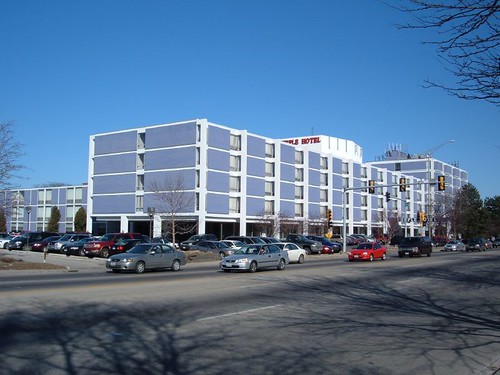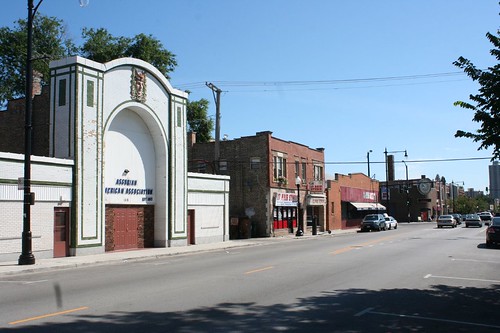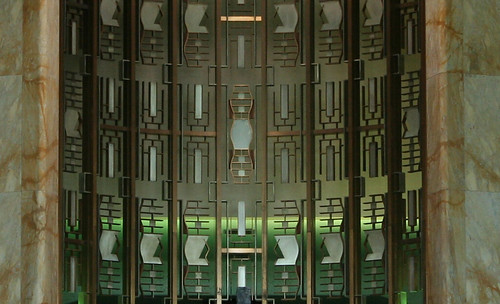
I've spent much of 2011 taking my bike on Metra trains daily, so I feel qualified to offer up some tips for anyone considering taking a bicycle on Metra:
1) Check the schedule! Before you leave the house, make sure you're heading for a train that allows bikes (basically, everything except morning rush hour heading into town, and evening rush hour heading out of town.)
In particular, make sure it's not a blackout date - Metra is terrible about publicizing bike blackout dates. If you don't do your homework, your only warning will be when the conductor barks "NO BIKES!" at you on the platform, leaving you with only seconds to either lock your bike on the platform and leave without it, or skip the train entirely.

2) Bikes are last on, and last off. Wait till everyone else is on the train before boarding. Wait till everyone else is out of the passenger compartment before rolling out. It's the rules, and it's just plain polite. You're likely to whack someone with a pedal or handlebar if you're in the middle of a crowd of people getting on or off. Don't worry - the train will not leave without you.
3) Have a bungee cord with you. They're incredibly cheap at Target or Walmart. The rules require you to strap your bike to the bottom rails. I see bikers routinely using U-locks, chains, or cloth straps for the same purpose, but it's incredibly awkward and time consuming - particularly annoying when someone else needs to put their bike on top of yours.
4) Unless you're going to the end of the line, stay with your bike. Or at least pay attention to it. People with bikes are constantly getting on and off, all up and down the line. If you reach your stop and haven't been paying attention, you may find another bike on top of yours. Likewise, your bike might end up blocking someone else's.
5) Take 3 seats only - park all the way back. The handicapped/bike/luggage area contains 5 fold-down seats. A bike can easily fit on top of only three of them, if you push it all the way against the compartment wall (toward the door.) It's rude and thoughtless to take up 4 or even 5 seats when three will do the trick - but I see it happen all the time.
Also, tuck your bike tight against the seats. The pedal that's against the car wall should go under the rail so the bike is upright and fully against the wall.
6) Don't block the aisle. For better or worse, a lot of people choose to move around and between cars right before reaching a stop. Bikers who have just unstrapped their bike often stand in the middle of the aisle waiting for the train to stop, oblivious to people in the aisle behind them.
7) Listen to the conductor's instructions. On the trains, they are God, and what they say goes. Yes, sometimes some of them are assholes, and that sucks. But arguing with them won't help. Seriously - I've seen it tried.

And while I'm at it, a couple of tips for non-biker passengers:
1) Move for the bikers. If you're in the folding seats, the biker has the right to boot you out. Don't complain, don't grumble, don't be an ass about it - in fact, you shouldn't even have to be asked. There's dozens of seats on every car, but only one place where bikes can go. If you see a bike coming on board, be gracious and move to another seat. Is it fair? I don't know, but that's the chance you took when you sat on the folding seats. There's a sign right there announcing it.
2) Don't hang out in the vestibule. The vestibule is for people getting on and off the train, and you're in the way - especially for people trying to haul a bike out the door.


























